Keynote Speaker of CCESG 2018
Keynote Speaker I
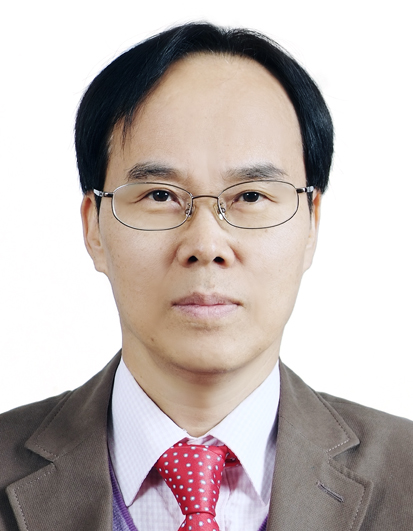
Prof. Hee-Je Kim
Department of Electrical and Computer Engineering,
Pusan National University, Geumjeong-Gu, Pusan Daehak-ro 63 Beon-gil 2, Busan, 46241, South Korea
Speech Title: Solar Power Generation Applications and Future of ESS (Energy Storage System)
Abstract:
Around the world, many governments have strived to increase the share of renewable green energy in their power productions. The main interest has mainly been energy security, increasing prices of carbon based energy sources and minimizing global warming. Concerning the second, global shipping is a major contributor to GHG (global greenhouse gas) emissions, bring responsible for approximately 3% of global CO2 emissions.
The IMO (international maritime organization) is now working to start GHG regulations for global shipping, and is under pressure, e.g. from EU and UNFCCC (United Nations framework convention on climate change), to apply regulations that will have a substantial impact on emissions.
In addition, we introduce the second application of stand-alone PV system. The solar power generation and ESS will be very important in the isolated island and distant place without electrical power supply. So we demonstrate a cold storehouse for fresh fruits with a proto-type stand-alone PV system with ESS by using smart-phone based on internet networking as the next generation solar power system with various new applications.
Furthermore, we have been developed the eco-friendly power supply for various fast charging and discharging applications based on our own developing new ESS (super-capacitor/Li polymer battery/Chemical Battery). And we introduce the future of ESS applications such as UES (UPS + ESS) for emergency.
Keynote Speaker II
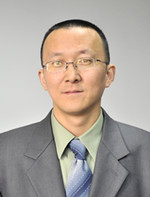
Prof. Juntao Fei
Hohai University, China
Speech Title: Adaptive Sliding Mode Control Using Double Loop Recurrent Neural Network for Dynamic Systems
Abstract:
In this study, an adaptive sliding mode control system using a double loop recurrent neural network (DLRNN) structure is proposed for a class of nonlinear dynamic systems. A new three-layer recurrent neural network(RNN) is proposed to approximate unknown dynamics with two different kinds of feedback loops where the firing weights and output signal calculated in the last step are stored and used as the feedback signals in each feedback loop. Since the new structure has combined the advantages of internal feedback neural network(NN) and external feedback neural network, the new structure can acquire the internal state information while the output signal is also captured, thus the new designed DLRNN can achieve better approximation performance compared with the regular neural networks without feedback loops or the regular recurrent neural networks with a single feedback loop. The new proposed DLRNN structure is employed in the equivalent controller to approximate the unknown nonlinear system dynamics, and the parameters of the DLRNN are online updated by adaptive laws to get favorable approximation performance. To investigate the effectiveness of the adaptive neural sliding controller with DLRNN, the proposed methodology is applied to a z-axis Micro-Electro- Mechanical System (MEMS) gyroscope to control the vibrating dynamics of the proof mass. Simulation results demonstrate that the proposed control system can achieve good tracking performance and the comparisons of approximation performance between Radial Basis Function(RBF) NN, RNN and DLRNN show that the DLRNN can accurately estimate the unknown dynamics with fast speed while the internal states of DLRNN are more stable.
Bio:
Professor Juntao Fei received his B.S. degree from the Hefei University of Technology in 1991, M.S. degree from University of Science and Technology of China in 1998, M.S and Ph.D. degree from the University of Akron, USA in 2003 and 2007 respectively. He was a visiting scholar at University of Virginia, USA from 2002 to 2003, North Carolina State University, USA from 2003 to 2004 respectively. He served as an assistant professor at the University of Louisiana, USA from 2007 to 2009. Since May 2009, He has been a Professor at the College of IoT Engineering, Hohai University , Director of Institute of Electrical and Control Engineering. His research interests include adaptive control, intelligent control, sliding mode control, power electronics and control, mechatronics and robotics, smart material and structure. He is a Senior Member of IEEE. He has served as an associate editor for Transactions of the Institute of Measurement and Control, reviewers for numerous international journals, program committee members and chairs for numerous international conferences. He has published more than 200 journal and conference papers and 5 books and led more than 20 funded research projects as Principal Investigator. He authorized 50 invention patents. He is an awardee of the Recruitment Program of Global Experts (China). His biography has been included in Who’s Who in the World, Who’s Who in Science and Engineering, Who’s Who in America.
Keynote Speaker III
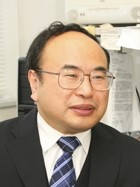
Prof. Nao-Aki Noda 野田尚昭
Kyushu Institute of Technology
Kitakyushu Japan 804-8550
Speech Title: Fatigue Life Improvement of Bolt-Nut Connections Having Pitch difference and Changing Thread Geometry
Abstract:
In a wide industrial field, the bolt-nut joint is unitized as an important machine element and widely used. To ensure the safety of the structure and reduce cost, low-cost bolt-nut connections with good anti-loosening performance and high fatigue strength are always required. To improve the strength of the bolt-nut connections, previous researchers mainly focus on stress reduction at the root of the thread by changing the shape of the bolt, and the effect of the materials on the fatigue strength has also been researched. In this study, a slight pitch difference between bolt and nut is considered, and both fatigue experiment and finite element analyses are conducted. The cracks in the bolt specimens are observed and the improvement mechanism of fatigue life is considered by comparing the experimental results with the finite element analytical results. The analytical results can explain the experimental results of the crack positions as well as the improvement mechanism of fatigue life. Furthermore, to improve the fatigue life more effectively, lager root radiuses ρ of bolts and nuts are considered both experimentally and analytically. It is found that the fatigue life of the bolts can be improved by enlarging the radius of the root comparing with standard M16 bolts. In addition, experiments and analysis of slight pitch difference bolt joints with larger root radius have also been conducted, and the fatigue life of the bolt joints is significantly improved by introducing a pitch difference and enlarging the root radius.
Bio:
Nao-Aki Noda has been doing research and teaching at Kyushu Institute of Technology, Kitakyushu, Japan since 1984. His research mainly focuses on failure analysis of steel structures. In the book named ” Theory of Fatigue Notch Strength Useful for Machine Design”, he proposed a stress concentration formula useful for estimating all notch dimensions within 1% error. Related works received Academic Contribution Award from JSMS (Japan Soc. Material Science). His research about special bolt joints received Outstanding Paper Medal of JSTP (Japan Soc. Tech. Plasticity). His research related to large ceramics structures received Sokeizai Industry Technology Award from the Materials Process Tech. Ctr., Japan. He is a fellow of JSME (Japan Society of Mechanical Engineers) and JSAE (Japan Society of Automotive Engineers). He also received JSME Materials & Mechanics Division Contribution Award. He is a co-editor of Stress Intensity Factors Handbook, Vols. 4 & 5, and Advances in Finite Element Analysis for Computational Mechanics 2014 and 2015. According to Scopus, he has published over 220 related articles in technical journals.
Keynote Speaker IV
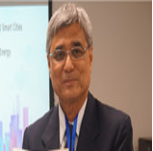
Professor Ir. Dr. Ab. Halim Bin Abu Bakar
UM Power Energy Dedicated Advanced Centre (UMPEDAC), University of Malaya, Kuala Lumpur, Malaysia
Speech Title: Application of the Internet of Things in Power Grid
Abstract:
Electricity has become an important commodity in today’s world. Power systems engineers have always been keeping their pace with new development in technologies in order to ensure continuous supply. Recently there has been a trend to rename the same continuing development as “Smart Grid”. Smart Grid is one of the applications of Internet of Things. Internet of Things can improve the efficiency and performance of power grid in three ways.
Firstly is the resilience. Resilience is the deployment of sensors connected via standard protocols to ensure reliability to the grid. This is more so with the bi-directional power flow due to the proliferation of Distributed Energy Resource. Presently the existing technology in use is the SCADA system. An improvement in technology is needed to cope with the bidirectional power flow. Also on the DER part, a smart inverter is needed to facilitate intelligent and automated local actions, control and monitoring.
Secondly is the enablement. It is the aggregation and analysis of data collected which enable the utilities to manage a wide variety of power consuming and power generating devices within the grid. At present, the technology used for the power grid are the Phasor Measurement Unit (PMU) and Special Protection Scheme (SPS).
Lastly is the optimisation. Optimization is the data available from the above to enable decisions to be made on power usage, generation and future investments.
Bio:
Prof Dr Ab Halim Abu Bakar received the B.Sc. degree in Electrical Engineering from the University of Southampton, United Kingdom in 1976, M.Eng. and Ph.D. degrees from the University of Technology, Malaysia in 1996 and 2003 respectively. He spent 30 years of industrial experience with Tenaga Nasional Berhad (TNB) before joining University of Malaya. Prof Ir Dr Halim is a Fellow of the Institute of Engineers Malaysia, Member of IEEE, Cigre, Chartered Engineer (UK) and P.Eng (Malaysia). Currently he is a professor with the UM Power Dedicated Advanced Centre (UMPEDAC), University of Malaya, Malaysia. He is an established academician and a practical engineer. He has to-date published 85 ISI and 141 Scopus papers in journals and 47 papers in proceedings internationally. He has successfully supervised to completion 11 PhD, 3 master by research (M.Eng.Sc), 1 master of philosophy (M.Phil) and 34 Masters by course work project (M.Eng) and has Web of Science H index of 17 and Scopus H index of 18. He is also involved as a reviewer for several Web of Science international journals and several international conferences. Prof Ir Dr Halim won several excellent awards during his professional and academic carrier. In 2008 he won IEEE PES Malaysian Chapter Outstanding Engineering Award. His research interest includes power system protection and power system transients.
Keynote Speaker V
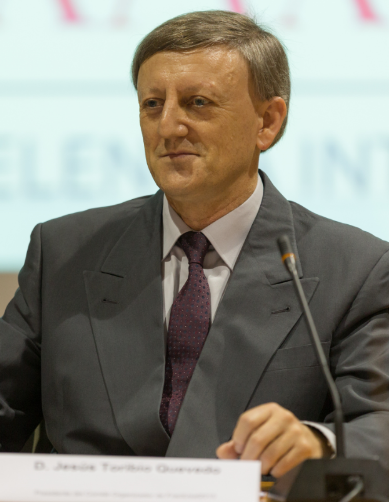
Prof. Dr. Jesús Toribio
Fracture of Materials and Structural Integrity Research Group, University of Salamanca, Spain
Speech Title: Hydrogen-Assisted Rolling-Contact Fatigue of Wind Turbines Bearings: and All is Always Now
Abstract:
Offshore wind parks often involve serious difficulties. On one hand, the bearings of offshore wind turbines are prone to suffer hydrogen assisted rolling contact fatigue (HA-RCF) as a consequence of the synergic action of the surrounding harsh environment and the multiaxial stress state caused by in-service mechanical loading. Therefore, for achieving a better assessment of the structural integrity of such components, the analysis of the hydrogen accumulation, as the variable revealing the prospective damage places, arises as the relevant issue. In previous studies, the widely used RCF ball-on-rod test was simulated by finite element method in order to obtain the stress-strain state inside the bearings during life in-service. From these states, the hydrogen distribution corresponding to the steady-state in the radial direction of the bearing was obtained. This paper goes further in the research developed in previous research including the analysis of the hydrogen distributions in hoop and axial directions. Thus, from these results, a better elucidation can be obtained of the potential places where the hydrogen could be more harmful and, consequently, where the bearing should fail during their life in service. The cyclic phenomenon of HA-RCF is repeated iteratively, thereby recalling the words of the poet Thomas S. Eliot: and All is Always Now.
Bio:
Professor Jesús Toribio graduated in Civil Engineering in 1982 and then in Mathematics in 1986. In 1987 he was awarded his PhD in the Polytechnic University of Madrid (UPM) and turned into Associate Professor in that Institution. In 1992 he became Full Professor and Head of the Materials Science Department of the University of La Coruña (at the age of 32, thus being the youngest Full Professor in the area of Materials Science in Spain). In 2000 he moved to the University of Salamanca (USAL) where is currently Full Professor of Materials Science and Head of the Fracture and Structural Integrity Research Group (FSIRG) of that Institution.
His research work is mainly concerned with fatigue and fracture mechanics, environmentally assisted cracking, stress corrosion cracking and hydrogen embrittlement/degradation/damage of metals and alloys (mainly cold drawn pearlitic steel wires for civil engineering and austenitic stainless steels for nuclear engineering and energy applications), covering theoretical, computational and experimental aspects. He actively participates in International Conferences, very often being member of the International Advisory Committee, organising Special Sessions/Symposia, being Session Chairman or delivering Plenary/Keynote/Invited Lectures. Professor Dr. Jesús Toribio has published more than 500 scientific papers, most of them in international books and journals.
He is the Chairman of the Technical Committee 10 (TC10): Environmentally Assisted Cracking of the European Structural Integrity Society (ESIS) and has been Director (2013-2017) of the International Congress of Fracture-The World Academy of Structural Integrity (ICF-WASI), being responsible of launching the Ibero-American Academy of Structural Integrity (IA2SI). Prof. Toribio has been awarded a variety of scientific research prizes and awards including: (i) UPM Young Scientist Award of the Polytechnic University of Madrid; (ii) METROTEC Award for the best Technological Research Project; (iii) Honour Medal of the Spanish Group of Fracture (GEF/SEIE) in recognition of his research achievements in the field of fracture mechanics; (iv) Fellow of the Wessex Institute of Technology (WIT) in recognition of leadership and outstanding work in engineering sciences; (v) Top Reviewer 2011 in recognition of an outstanding contribution to the quality of the Elsevier International Journal Engineering Fracture Mechanics; (vi) Fellow of the European Structural Society (ESIS Fellow) for his outstanding contributions to the art, science, teaching or practice of fracture mechanics and his service to the society; (vii) Honorary Member of the Italian Group of Fracture (IGF) in acknowledgement and appreciation of his outstanding achievements in the research field of fracture mechanics; (viii) Best Paper and Presentation Award in the International Conference on Energy Materials and Applications (ICEMA 2017) held in 2017 in Hiroshima, Japan, with a paper entitled: Numerical Simulation of Hydrogen Diffusion in the Pressure Vessel Wall of a WWER-440 Reactor; (ix) María de Maeztu Scientific Award of the University of Salamanca (800th anniversary during 2018) in recognition of academic trajectory and excellence in scientific and technological research.